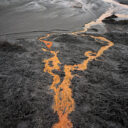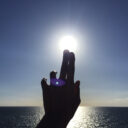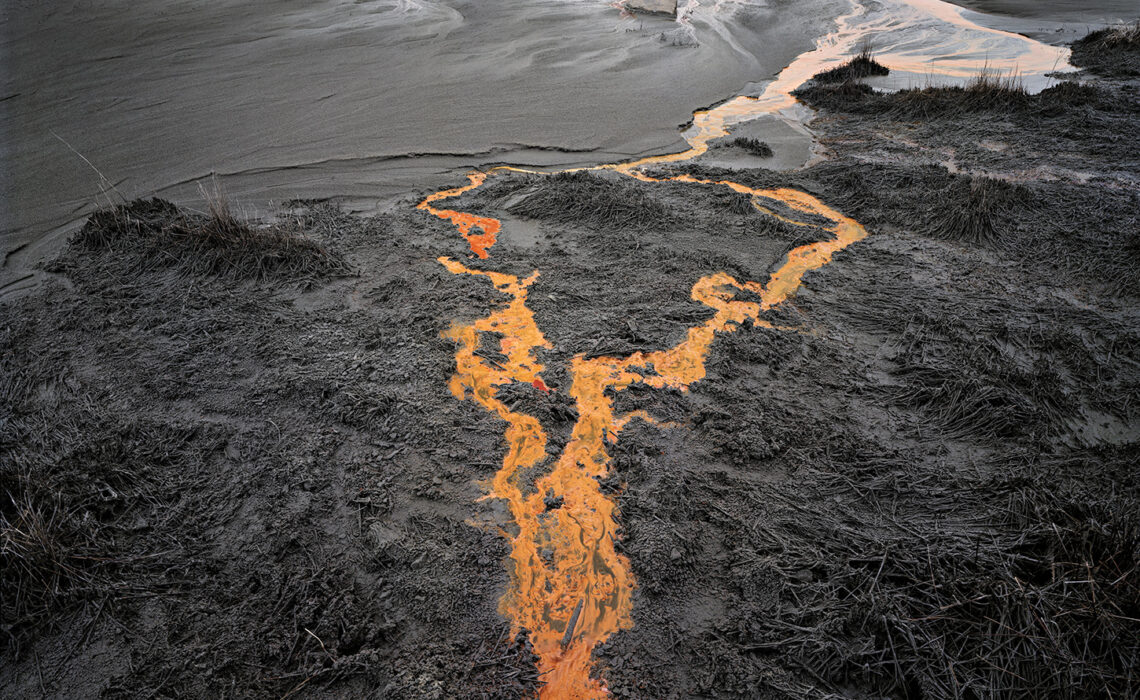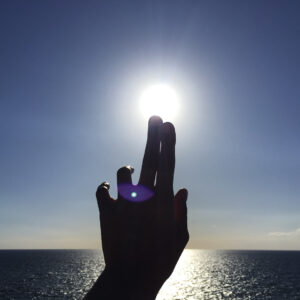Il filo di Arianna, per uscire dal nostro labirinto contemporaneo, volendo, lo possiamo recuperare unendo due importanti parole tra di loro.
Iniziamo da “ecologia”, intendendo parlare dello studio delle relazioni che intercorrono fra gli organismi e l’ambiente che li ospita, e passiamo poi alla “bellezza”, per raccontare la qualità capace di appagare l’animo attraverso i sensi e divenire oggetto di meritata contemplazione.
Questo nostro tempo è maturo per poter considerare ecologia e bellezza come due segmenti sinergici che assieme determinano le riduzioni di impatto ambientale e, al tempo stesso, generano emozioni, creando nuova bellezza. Una nuova visione della nostra relazione con il mondo che abitiamo potrebbe, finalmente, allontanarci dai nostri comportamenti spesso così poco eco-compatibili e renderci consapevoli della caducità della fragile armonia che ci circonda.
La bellezza che davanti a questi scenari accarezza i nostri sguardi increduli rimanda, in tal senso, a un verso di una poesia di Rilke raccolta all’interno delle sue “Elegie Duinesi”, quando afferma: “Ma chi, se gridassi, mi udrebbe, dalle schiere degli Angeli? E se anche un Angelo a un tratto mi stringesse al suo cuore: la sua essenza più forte mi farebbe morire. Perché il bello non è che il tremendo al suo inizio, noi lo possiamo reggere ancora, lo ammiriamo anche tanto, perché esso calmo, sdegna distruggerci. Degli Angeli ciascuno è tremendo”.
Dai temi ambientali al mondo dell’arte la relazione ce la offre il filosofo Heidegger, quando sostiene che l’arte è l’incontro che crea una scossa, una rottura, che segna un prima e un dopo e lascia scoprire parti inimmaginabili del mondo, diventando rifugio da questa scossa e al tempo stesso descrivendola.
Riuscire a vedere la luce, immaginando che dall’altra parte c’è una tenebra che può insinuarsi, ci permetterà di aprire il nostro sguardo e prepararci all’imponderabile e al tragico e a pensare all’arte come strumento per portare la luce nelle tenebre.
Con questi pensieri, che ruotano tra la poesia e la fotografia, tra la coscienza ambientalista e la filosofia, entriamo con autenticità e consapevolezza, nel magistrale e certosino lavoro che Edward Burtynsky porta avanti da oltre trent’anni.
Classe 1955, fotografo di fama internazionale, è nato e vive in Canada, un paese dove la natura sembra essere una dominatrice possente.
Oggi Burtynsky viene considerato il padre putativo di un’intera generazione di fotografi che negli ultimi anni focalizza il lavoro sulla rilettura critica di siti industriali o urbanizzati.
Le sue fotografie, dedicate alla rappresentazione di sbalorditivi paesaggi industriali, sono parte di importanti collezioni esposte in oltre sessanta musei in tutto il mondo, tra i quali: la National Gallery of Canada, il Museum of Modern Art e il Guggenheim Museum di New York, il Museo Reina Sofia di Madrid, la Tate Modern a Londra e il Museo d’arte della contea di Los Angeles in California.
Passando in rassegna tutto il suo lavoro, appare evidente il compito assunto da Burtynsky: spalancare le porte della nostra assopita coscienza che raccoglie tutte le verità che non vogliamo vedere, per liberarci, in tal modo, dalla comoda ipocrisia nella quale ci siamo rifugiati.
Il richiamo ai versi di Rilke appare evidente nelle sue immagini solo quando il fruitore si rende conto che il messaggio contenuto può arrivare dopo aver superato l’impatto iniziale con la vorace barriera della bellezza formale delle sue composizioni.
Persi nelle sue immagini, infatti, ci lasciamo quasi fagocitare dall’incredibile attenzione della sua ricerca costruita con una meticolosità, forse anche un po’ ossessiva, rivolta a ogni fase del suo percorso narrativo, attraverso un uso della composizione che lui ama definire: “una distribuzione democratica del frame”, in grado di garantire che non vi siano zone dell’immagine che sovrastino altre in termini di importanza.
Avvolti da un pericoloso e irresistibile manto di bellezza, le ricerche di Burtynsky, documentando la trasformazione del paesaggio in favore del progresso, attraversano situazioni drammatiche, per certi versi anche spaventose: discariche, cave, miniere e cimiteri di navi, realtà prive di una connotazione umana, enormi cumuli di rifiuti tossici, dentro paesaggi completamente sconvolti dalla mano terribile e dall’animo perverso dell’uomo e scene prive di una qualsiasi via di uscita.
Nelle suggestive immagini di grande formato, racchiuse nei suoi lavori, da “China”, passando per “Oil”, “Water”, “Manufactured Landscape” e “Anthropocene”, non si può scappare dal forte e delicato monito di Burtynsky.
Nel raccontare gli infiniti e tristissimi paesaggi manifatturieri, il processo di trasformazione del petrolio che contamina la crescita della natura e i vividi paesaggi che testimoniano quanto il bene primario dell’acqua non sia più una fonte inesauribile, ogni osservatore viene messo in condizione di porsi domande concrete riguardo al suo impegno attivo nel mondo, per poi cercare risposte piene di speranza nella vita quotidiana.
Pensando a quanto la vita, spesso, riesca a sorprenderci nella sua ciclicità, ci vengono in soccorso alcune struggenti parole di Bertolt Brecht della sua poesia “La primavera che non c’è più”, che hanno una dolce sintonia con tutto il lavoro di Burtynsky nel descrivere una nostalgia di un tempo passato che può aprire nuove porte di un futuro costantemente migliorabile.
Molto tempo prima
Che ci gettassimo su petrolio, ferro e ammoniaca
C’era ogni anno
Il tempo degli alberi che verdeggiavano irresistibili e violenti.
Noi tutti ricordiamo
I giorni più lunghi
Il cielo più chiaro
L’aria mutata
Della primavera destinata a venire.
…
terror at its beginnings
The Ariadne’s thread to escape from our contemporary labyrinth can be found, if we want to, by merging two important words.
Let us begin with “ecology”, meaning the study of the relationship between the organisms and the environment housing them, and then move on to “beauty”, to describe the quality capable of satisfying the soul through the senses and that becomes subject of a deserved contemplation.
These current times are mature enough to consider ecology and beauty as two synergic segments that, together, define the reductions of environmental impact and, at the same time, create emotions and new beauty. A new vision of our relationship with the world we inhabit could, finally, take us away from our behaviors, often so little eco-compatible, and make us aware of the transience of the feeble harmony surrounding us.
The beauty that in front of these scenarios caresses our incredulous gazes references, in a certain sense, the verse of a poem by Rilke, collected in his “Duino Elegies”, when he states: “Who, if I cried out, would hear me among the Angelic Orders? And even if one were to suddenly take me to its heart, I would vanish into its stronger existence. For beauty is nothing but the beginning of terror, that we are still able to bear, and we revere it so, because it calmly disdains to destroy us. Every Angel is terror”.
From the environmental subjects to the art world, the relationship is offered by the philosopher Heidegger, when he claims that art is the meeting that creates a shock, a rupture, signaling a before and an after and let us discover unimaginable parts of the world, becoming refuge from this shock and at the same time describing it. Being able to see the light, imagining that on the other side there is an insinuating darkness, allows us to open our eyes and prepare ourselves to the imponderable and the tragic and to think of art as an instrument to bring light among the darkness.
With these thoughts, that range between poetry and photography, environmental conscience and philosophy, we can approach, with authenticity and awareness, the masterful and meticulous work that Edward Burtynsky has been carrying on from more than thirty years.
Class of 1955, photographer of international fame, born and currently living in Canada, a country where nature seems to be a mighty ruler.
Today, Burtynsky is seen as the putative father of an entire generation of photographers who, in the last years, has focused their work on the critical reinterpretation of industrial or urbanized sites.
His pictures, dedicated to the representation of marvelous industrial landscapes, are part of important collections displayed in more than sixty museums throughout the world, among which: the National Gallery of Canada, the Museum of Modern Art and the Guggenheim Museum of New York, the Reina Sofia Museum of Madrid, the Tate Modern of London and the Art Museum of the County of Los Angeles in California.
Examining his entire work, the task undertook by Burtynsky is clear: opening the doors of our sleeping conscience, gathering all the truths we don’t want to face, and free us, this way, from the comfortable hypocrisy where we have taken refuge.
The reference to Rilke’s verses appears clearly in his pictures only when the observer realizes that the message contained can only be received after overcoming the initial impact with the voracious barrier of the formal beauty in his compositions.
Lost in his pictures, indeed, we almost let us be devoured by the incredible attention of his research, built with a precision, perhaps a little bit obsessive, aimed at every phase of his narrative path, through an use of the composition that he loves to define: “a democratic distribution of the frame”, capable of ensuring that no parts of the image overlap others, in terms of importance.
Enveloped by a dangerous and overwhelming mantle of beauty, Burtynsky’s researches, documenting the transformation of the landscape in favor of progress, features dramatic situations, in a certain sense frightful as well: junkyards, quarries, mines and ship graveyards, realities void of any human connotation, enormous piles of toxic wastes, inside environments completely overturned by the terrible hand and the twisted soul of Man and scenes lacking any way out.
In the suggestive, large-scale images, contained in his works, from “China” to “Oil”, “Water”, “Manufactured Landscape” and “Anthropocene”, we cannot escape from the strong and delicate warning of Burtynsky.
In describing the endless and melancholic manufacturing landscapes, the process of transformation of oil contaminating the growth of nature and the colorful landscapes, a testament of how the primary good of water is not an endless resource anymore, every observer is put in a position to ask themselves tangible questions regarding their active participation in the world, and then to find answers filled with hope in everyday life.
Thinking about how much life can often surprise us in its cyclic nature, we are comforted by some moving words by Bertolt Brecht in his poem “Spring”, words in sweet harmony with the entire work of Burtynsky in describing the nostalgia for a past time that could open new doors to a constantly improving future.
Long before
We fell upon iron, oil and ammonia
There was in every year
The time of the wildly unstoppable leafing trees.
The lengthening days
We all remember
Brighter skies
Change in the air
Of spring that was coming for certain.
…








No Comments